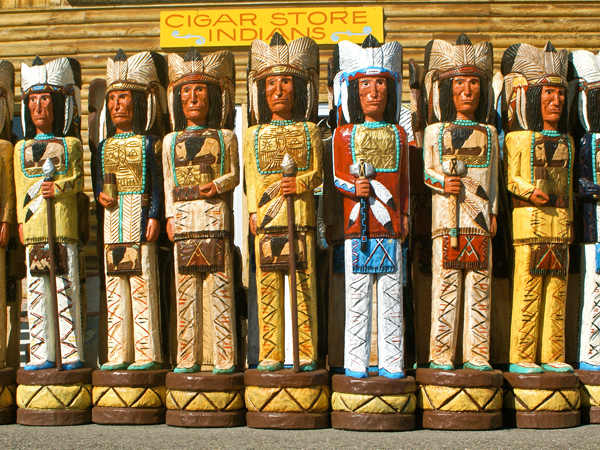
(Image above courtesy of Woodkern/Bigstock.com)
I recently acquired a hand-carved cigar store Indian that is in pretty rough shape. I have utilized wood filler for some of the cracks in the statue, but now my concern is replacing the bottom of the carving as it has rotted away. I was told my best bet would be to cut the bottom of the carving completely off, find an oversized tree trunk, carve out the center and mix a colored concrete to pour into the hollowed-out portion and then place the legs of the carving into the concrete, thus forming a new base. Does this sound like a reasonable way to repair this item? The carving stands approximately 5 feet high. – Bob Greene
Tim Inman: NO! Don’t be cutting off anything!!! There are a number of ways to preserve your piece. Study up on “consolidation” techniques used in architectural restoration work. To me, this would be a fine candidate for an epoxy saturation of the rotted (but still present!) wood structure. If you have a vacuum pump available, this is an excellent tool to use to help “suck” the epoxy into the decayed material as deeply as possible. Then, once the base is solid again, cosmetic infills can be applied to get the surface back to the place it was originally. This might be a job for a pro, but here, at least, you have the basics of the procedure. Full-blown cut-and-replace work is the very, very, very last alternative to conservation and restoration work in my book.
Chris Marshall: Concrete would certainly give your carving a “firm understanding,” as my grandpa would probably say with a chuckle, but I don’t think I’d go that route for a couple of reasons. First, if you want the whole piece to look as authentic as possible, the base should be made entirely of wood and not wood/concrete. No matter how well you tint it, the concrete is still going to look like concrete. Second, pushing the feet down into the concrete will at least partially hide them and probably look a little odd – and there’s no guarantee that the connection will hold without some sort of mechanical reinforcement, too. Third, concrete will make this statue immensely heavy to move around. If you feel you absolutely must replace the base instead of repairing it (as Tim suggests), here’s what I’d try instead: I’d find a suitably sized cross-section of a log for a new base, then use a couple of large diameter dowels to connect the statue’s feet to it. Flatten the bottoms of the feet as much as possible to give it a good point of connection to the base, and bore holes up into the feet and down into the base. Glue the dowels, statue and base together with marine grade epoxy. Or, if the base is pretty thin, you might be able to drive long counterbored lag screws up through the base from below and into the statue’s feet, instead of using dowels. Either way, skip the concrete, and at least consider keeping the rotted base to preserve the history of this piece.





